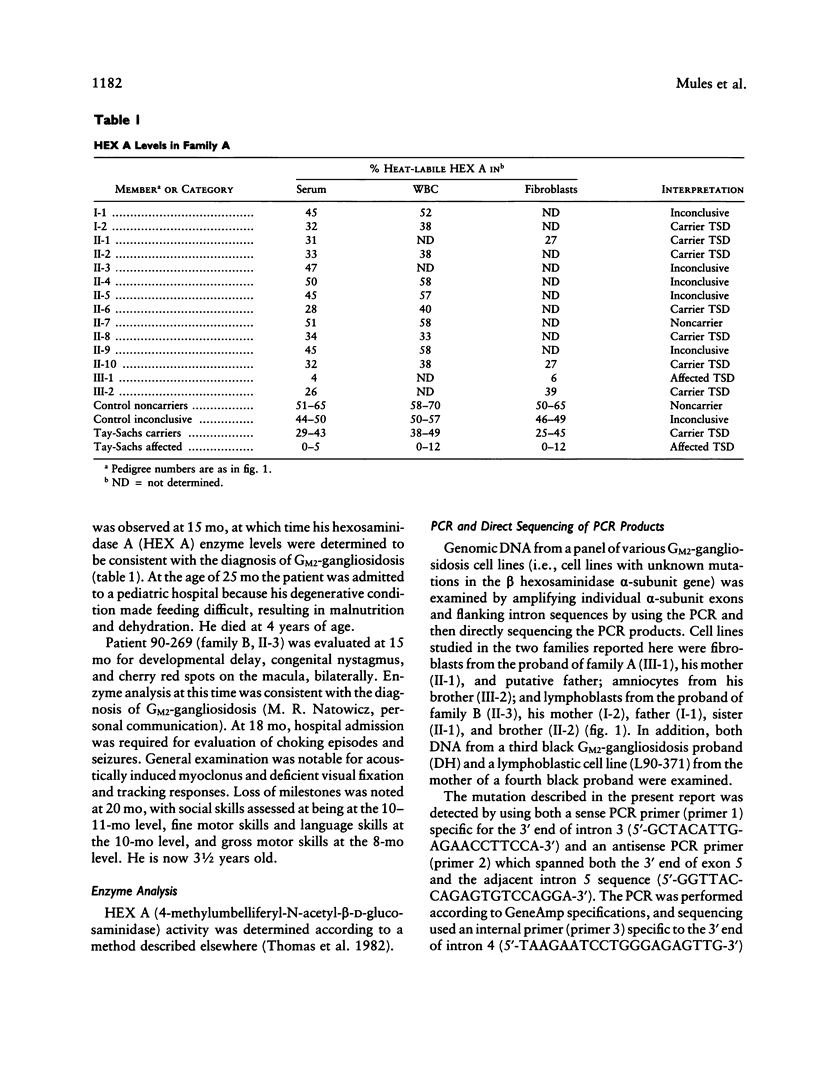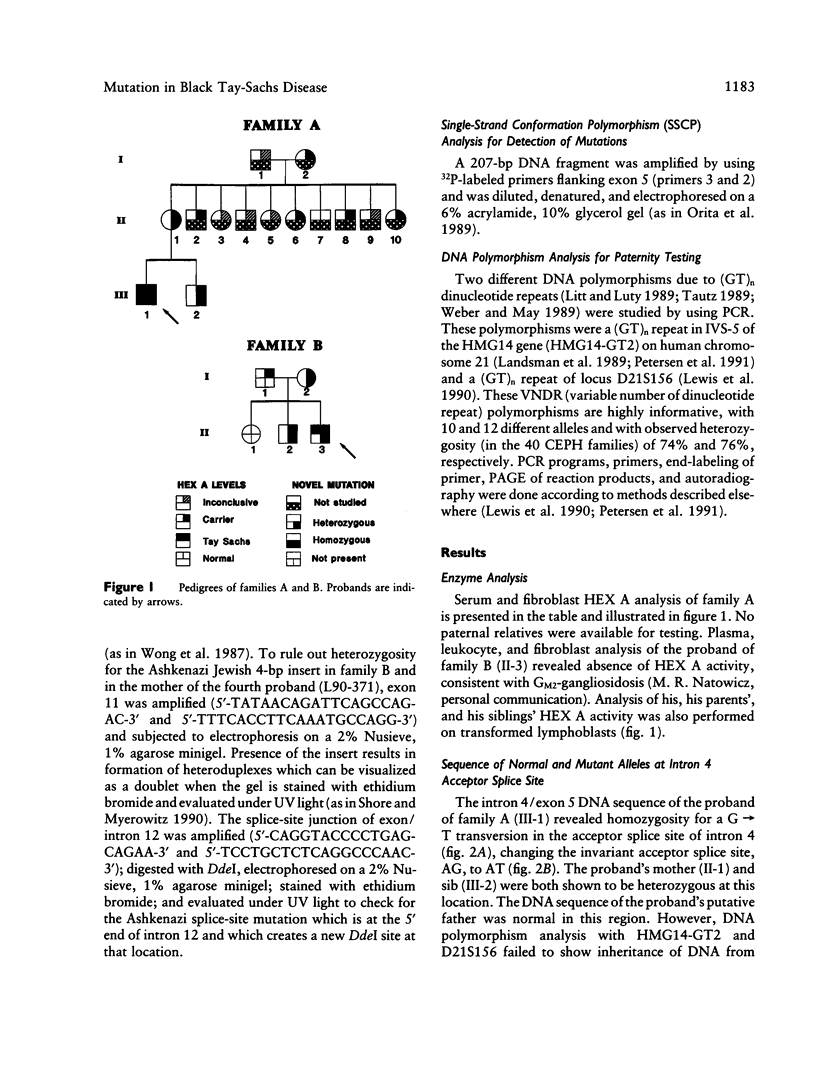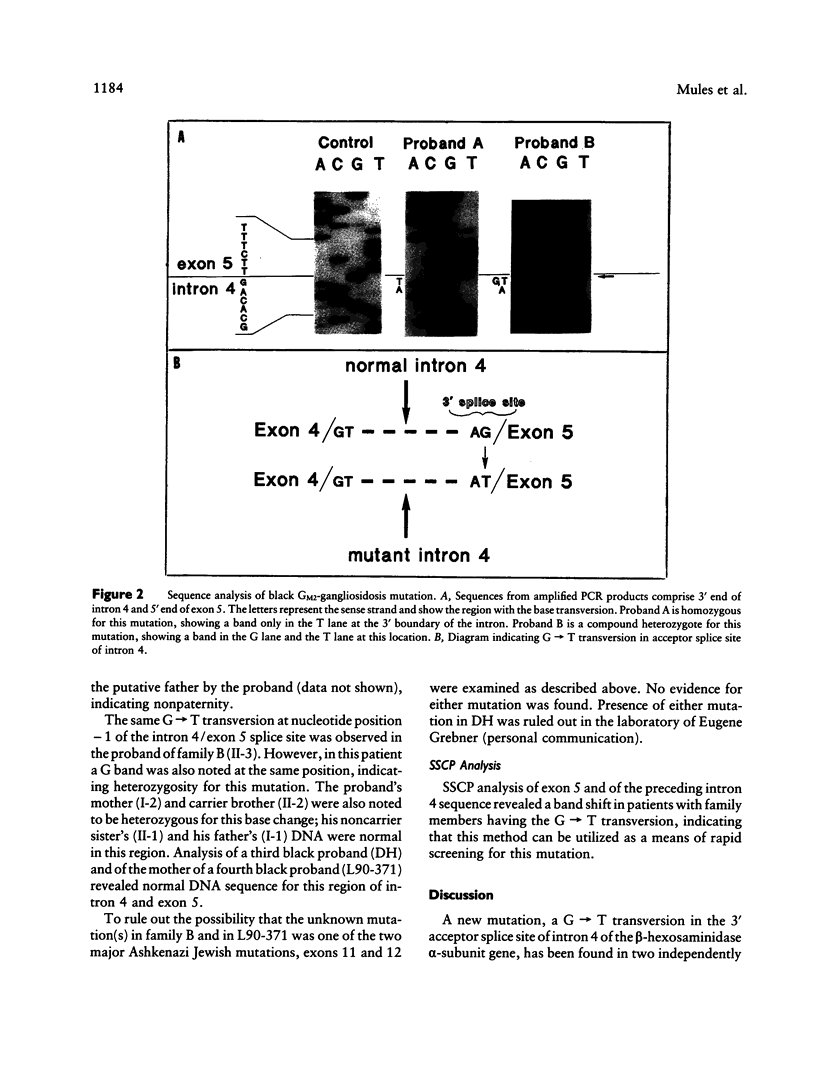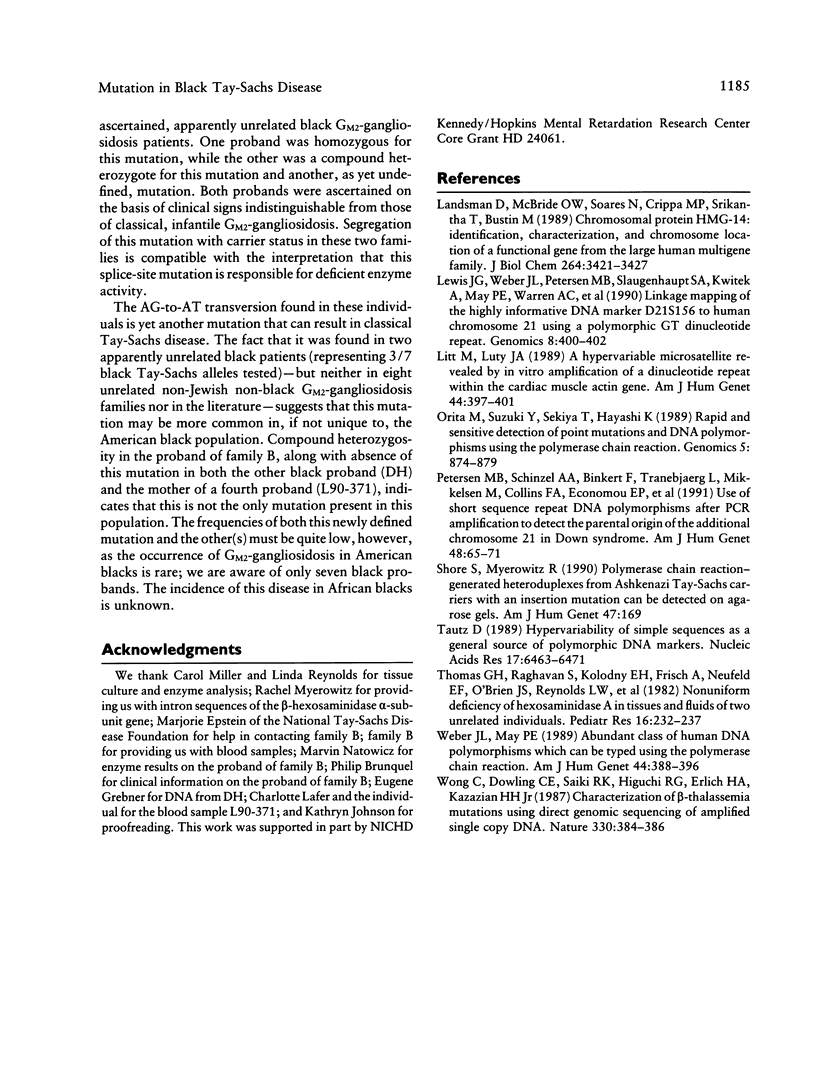Abstract
Samples of genomic DNA from three unrelated American black infants having both biochemical and clinical features of classical infantile Tay-Sachs disease were sequenced following PCR amplification. A G----T transversion was observed in the AG acceptor splice site preceding exon 5 of the beta-hexosaminidase alpha-subunit gene in the first black family. This transversion changed the acceptor splice site from the consensus sequence, AG, to AT, thereby interfering with splicing at this intron 4/exon 5 junction. The proband was homozygous for this mutation; his mother and a brother are heterozygous. The same mutation was found in a second, apparently unrelated, black GM2-gangliosidosis patient. The second patient was a compound heterozygote, as only one allele carried this mutation. The mother and a brother in this second family are carriers for this mutation, while the father and a noncarrier sister are normal for this region of the gene. The third proband did not have this mutation; nor did the mother of a fourth black proband. Eight other independently ascertained non-black, non-Jewish, GM2-gangliosidosis families did not have this mutation. The observation of the same novel mutation in two unrelated black GM2-gangliosidosis patients indicates that the American black population has segregating within it at least one GM2-gangliosidosis mutation which may be specific to this population and not a result of migration.
Full text
PDF




Images in this article
Selected References
These references are in PubMed. This may not be the complete list of references from this article.
- Landsman D., McBride O. W., Soares N., Crippa M. P., Srikantha T., Bustin M. Chromosomal protein HMG-14. Identification, characterization, and chromosome localization of a functional gene from the large human multigene family. J Biol Chem. 1989 Feb 25;264(6):3421–3427. [PubMed] [Google Scholar]
- Lewis J. G., Weber J. L., Petersen M. B., Slaugenhaupt S. A., Kwitek A., May P. E., Warren A. C., Chakravarti A., Antonarakis S. E. Linkage mapping of the highly informative DNA marker D21S156 to human chromosome 21 using a polymorphic GT dinucleotide repeat. Genomics. 1990 Oct;8(2):400–402. doi: 10.1016/0888-7543(90)90300-j. [DOI] [PubMed] [Google Scholar]
- Litt M., Luty J. A. A hypervariable microsatellite revealed by in vitro amplification of a dinucleotide repeat within the cardiac muscle actin gene. Am J Hum Genet. 1989 Mar;44(3):397–401. [PMC free article] [PubMed] [Google Scholar]
- Orita M., Suzuki Y., Sekiya T., Hayashi K. Rapid and sensitive detection of point mutations and DNA polymorphisms using the polymerase chain reaction. Genomics. 1989 Nov;5(4):874–879. doi: 10.1016/0888-7543(89)90129-8. [DOI] [PubMed] [Google Scholar]
- Petersen M. B., Schinzel A. A., Binkert F., Tranebjaerg L., Mikkelsen M., Collins F. A., Economou E. P., Antonarakis S. E. Use of short sequence repeat DNA polymorphisms after PCR amplification to detect the parental origin of the additional chromosome 21 in Down syndrome. Am J Hum Genet. 1991 Jan;48(1):65–71. [PMC free article] [PubMed] [Google Scholar]
- Shore S., Myerowitz R. Polymerase chain reaction-generated heteroduplexes from Ashkenazi Tay-Sachs carriers with an insertion mutation can be detected on agarose gels. Am J Hum Genet. 1990 Jul;47(1):169–169. [PMC free article] [PubMed] [Google Scholar]
- Tautz D. Hypervariability of simple sequences as a general source for polymorphic DNA markers. Nucleic Acids Res. 1989 Aug 25;17(16):6463–6471. doi: 10.1093/nar/17.16.6463. [DOI] [PMC free article] [PubMed] [Google Scholar]
- Thomas G. H., Raghavan S., Kolodny E. H., Frisch A., Neufeld E. F., O'Brien J. S., Reynolds L. W., Miller C. S., Shapiro J., Kazazian H. H., Jr Nonuniform deficiency of hexosaminidase A in tissues and fluids of two unrelated individuals. Pediatr Res. 1982 Mar;16(3):232–237. doi: 10.1203/00006450-198203000-00014. [DOI] [PubMed] [Google Scholar]
- Weber J. L., May P. E. Abundant class of human DNA polymorphisms which can be typed using the polymerase chain reaction. Am J Hum Genet. 1989 Mar;44(3):388–396. [PMC free article] [PubMed] [Google Scholar]
- Wong C., Dowling C. E., Saiki R. K., Higuchi R. G., Erlich H. A., Kazazian H. H., Jr Characterization of beta-thalassaemia mutations using direct genomic sequencing of amplified single copy DNA. 1987 Nov 26-Dec 2Nature. 330(6146):384–386. doi: 10.1038/330384a0. [DOI] [PubMed] [Google Scholar]



